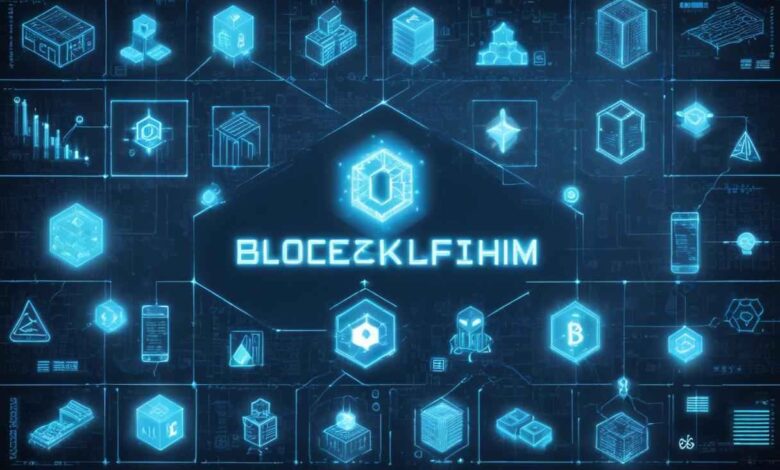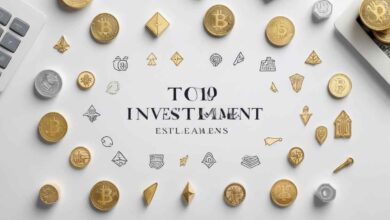Top 10 Blockchain Platforms that Rule with Innovative Solutions
Leading Innovation: Top 10 Blockchain Platforms

From secure payment gateways to validated ledgers, blockchain technology has transformed a multitude of industries by delivering new methods for security, transparency, and speed. The rising popularity of the technology raises questions about which platform would be most appropriate for businesses and developers. Here are the top 10 blockchain platforms that stand out with innovative solutions.
1. Ethereum
Overview
Ethereum is one of the most popular blockchain platforms known for its smart contract capabilities. It is a tool that can create decentralized applications (dApps) and run peer-to-peer contracts.
Key Features
- Smart Contracts: Automated contracts written in code with terms directly enforced within it.
- Decentralized Applications: Over 232 million dApps across different sectors.
- Thousands of Developers: An active community with good support and documentation.
Use Cases
- DeFi (Decentralized Finance): Uniswap, Aave.
- NFT Marketplaces: OpenSea, Rarible.
- Supply Chain Management: Provenance, IBM Food Trust.
2. Hyperledger Fabric
Overview
Hyperledger Fabric, built for enterprise use by the Linux Foundation, is many companies’ gateway to blockchain technology.
Key Features
- Enterprise Network: More security with restricted access.
- Modular: Flexibility to configure based on different business use-cases.
- Scalability: Ideally developed for industrial-scale applications.
Use Cases
- Supply Chain: Walmart and Maersk’s TradeLens.
- Healthcare: Privacy and security for managing patient data.
- Finance: Trade finance platforms.
3. Polkadot
Overview
Polkadot is designed to allow different blockchains to send messages and transact value trust-free with one another, what the team refers to as a “heterogenous multi-chain framework.”
Key Features
- Interoperability: Communicate between different blockchains.
- Scalable: Able to process transactions in parallel.
- Custom Blockchains: For creating custom blockchains.
Use Cases
- Cross-Chain Transfers: Payments and transfers on different blockchains.
- DeFi Applications: Acala Network.
4. Cardano
Overview
Cardano is a decentralized, fully open-source public blockchain cryptocurrency project. It is established as a strong defense of provably-secure PoS (Proof-of-Stake) protocol with the highly scalable Ouroboros consensus algorithm.
Key Features
- Proof of Stake: The green consensus mechanism.
- Ouroboros Protocol: Safe and expandable.
- Research-Based Development: Derived from serious peer-reviewed science.
Use Cases
- Digital Identity Management: Atala PRISM.
- Agriculture: Supply chain visibility in developing countries.
- Finance: Financial services in underbanked areas.
5. Binance Smart Chain (BSC)
Overview
Binance Smart Chain is a separate blockchain platform developed by Binance offering features associated with smart contracts and is EVM-compatible (Ethereum Virtual Machine).
Key Features
- EVM Compatible: Supports Ethereum tools and dApps.
- Low Transaction Fee: Cheaper than Ethereum.
- High Throughput: Fast block times and scalability.
Use Cases
- DeFi Projects: PancakeSwap, Venus.
- Games: Blockchain-based games like MOBOX.
- Token Launches: Numerous token projects launching on BSC.
6. Tezos
Overview
Tezos is a secure, upgradable, and governance-focused blockchain.
Key Features
- On-Chain Governance: Node holders can vote on protocol changes.
- Formal Verification: Ensures smart contract correctness.
- Proof of Stake Consensus: Energy-efficient mechanism.
Use Cases
- Digital Collectibles: Hic et Nunc.
- Financial: Asset tokenization and DeFi.
- Gaming: Blockchain-hosted video games.
7. EOS
Overview
EOSIO is an ecosystem designed for massive-scale dApps with high performance, scalability, and flexibility.
Key Features
- High Transaction Throughput: Thousands of transactions per second.
- Fee-less: Staking tokens for transaction bandwidth.
- Governance Structure: Community-activated, stakeholder governance-based decentralized operating system.
Use Cases
- Voice Social Network: Similar to Twitter.
- Enterprise: Supply chain and logistics applications.
- DeFi: Decentralized finance projects.
8. Tron
Overview
Tron allows the creation of decentralized storage technology for digital content entertainment systems easily, quickly, and free of charge.
Key Features
- High Volume: Capable of processing 2,000 transactions per second.
- Cost-Effective: Lower transaction fees.
- Scalable: Supports massively used dApps.
Use Cases
- Content Creation: Decentralized platforms like DLive.
- DeFi: JustSwap and other DeFi applications.
- Gaming: Blockchain-based games.
9. Solana
Overview
Solana is a high-performance blockchain with fast transactions and high throughput.
Key Features
- Proof of History (PoH): Improves scalability and throughput.
- Low Transaction Costs: Minimal transaction fees.
- Fast Transactions: Over 1,000 transactions per second.
Use Cases
- DeFi: Platforms like Serum.
- NFT Marketplaces: Metaplex for minting and listing NFTs.
- Web3 Applications: dApps and protocols.
10. Corda
Overview
Corda is a blockchain platform built by R3, designed for businesses to construct interoperable networks with a focus on privacy.
Key Features
- Confidentiality: Transactions are only visible to need-to-know parties.
- Interoperability: Facilitates data sharing between businesses.
- Scalable: Processes high numbers of transactions quickly.
Use Cases
- Finance: Trade and financial services.
- Traceability: End-to-end supply chain traceability and transparency.
- Medical and Health: Secure patient data sharing.
11. VeChain
Overview
VeChain is a blockchain platform that focuses on supply chain and business processes. It uses distributed ledger technology to streamline these processes and information flow for complex supply chains.
Key Features
- Supply Chain Management: Enhanced transparency and efficiency.
- ToolChain: Provides a comprehensive blockchain application service environment.
- Dual-Token System: VET and VTHO tokens for value transfer and transaction costs.
Use Cases
- Logistics: Track and verify products throughout the supply chain.
- Luxury Goods: Verify authenticity of high-value products.
- Healthcare: Manage and track medical records securely.
12. Stellar
Overview
Stellar is a blockchain network designed to facilitate fast, low-cost cross-border payments. It connects banks, payment systems, and people to facilitate reliable money transfers.
Key Features
- Fast Transactions: Quick confirmation times.
- Low Fees: Minimal transaction costs.
- Scalable: Handles a high volume of transactions.
Use Cases
- Cross-Border Payments: Fast, low-cost international money transfers.
- Token Issuance: Easily create and manage digital assets.
- Micropayments: Support for microtransactions and small-scale payments.
13. Zilliqa
Overview
Zilliqa is a high-throughput blockchain platform designed to scale efficiently and handle thousands of transactions per second.
Key Features
- Sharding: Divides the network into smaller, more manageable shards to improve scalability.
- Smart Contracts: Supports smart contract development.
- High Throughput: Capable of processing large volumes of transactions quickly.
Use Cases
- DeFi: Decentralized finance applications.
- Digital Advertising: Fraud-resistant advertising platforms.
- Gaming: Blockchain-based gaming applications.
14. Hedera Hashgraph
Overview
Hedera Hashgraph offers a distributed public ledger that utilizes the fast, fair, and secure hashgraph consensus algorithm.
Key Features
- High Speed: Processes hundreds of thousands of transactions per second.
- Security: Asynchronous Byzantine Fault Tolerance (ABFT).
- Low Fees: Minimal transaction costs.
Use Cases
- Micropayments: High-speed and low-cost transactions for microservices.
- Data Integrity: Secure and verifiable timestamping of data.
- Tokenization: Issuing and managing digital assets.
15. Avalanche
Overview
Avalanche is a decentralized platform that allows anyone to create, transfer, and trade digital assets using smart contracts and other advanced technologies.
Key Features
- High Throughput: Supports over 4,500 transactions per second.
- Interoperability: Connects with various blockchain networks.
- Subnets: Customizable private or public blockchains.
Use Cases
- DeFi: Decentralized finance platforms and applications.
- Asset Issuance: Create and trade digital assets.
- Gaming: Blockchain-based gaming applications.
16. Algorand
Overview
Algorand is a scalable, secure, and decentralized digital currency and transactions platform.
Key Features
- Pure Proof-of-Stake (PPoS): Secure, fast, and decentralized consensus mechanism.
- Smart Contracts: Supports complex applications.
- Scalability: Handles thousands of transactions per second.
Use Cases
- Payments: Fast and secure digital payments.
- DeFi: Decentralized financial applications.
- Supply Chain: Enhanced supply chain management.
17. Cosmos
Overview
Cosmos is a decentralized network of independent parallel blockchains, each powered by BFT consensus algorithms like Tendermint.
Key Features
- Interoperability: Connects multiple blockchains.
- Scalability: Each blockchain is capable of independent operation.
- Flexibility: Easy to create and deploy custom blockchains.
Use Cases
- Cross-Chain DeFi: Interoperable DeFi applications.
- Gaming: Blockchain-based gaming networks.
- Finance: Interconnected financial services.
18. NEO
Overview
NEO is an open-source blockchain platform driven by the community, designed to build a scalable network of decentralized applications.
Key Features
- Digital Identity: Supports digital identities for enhanced security.
- Smart Contracts: Advanced smart contract capabilities.
- NEO and GAS: Dual-token system for value transfer and network fees.
Use Cases
- Digital Assets: Create and trade digital assets securely.
- Identity Verification: Digital identity management.
- Smart Economy: Integration of digital assets, digital identities, and smart contracts.
19. Chainlink
Overview
Chainlink is a decentralized oracle network that enables smart contracts on blockchain platforms to securely connect to external data sources, APIs, and payment systems.
Key Features
- Decentralized Oracles: Secure and reliable data feeds for smart contracts.
- Cross-Chain Compatibility: Works with multiple blockchain networks.
- Security: Ensures data integrity and reliability.
Use Cases
- DeFi: Reliable price feeds for DeFi applications.
- Insurance: Smart contracts for parametric insurance.
- Gaming: Secure and verifiable randomness for gaming applications.
20. IOTA
Overview
IOTA is a distributed ledger designed to handle microtransactions for the Internet of Things (IoT) ecosystem.
Key Features
- Tangle: A directed acyclic graph (DAG) for fast and feeless transactions.
- Scalability: Designed to scale with network activity.
- IoT Integration: Seamlessly integrates with IoT devices.
Use Cases
- IoT: Microtransactions between IoT devices.
- Supply Chain: Enhanced traceability and transparency.
- Smart Cities: Applications for smart city infrastructure.
Conclusion
Blockchain is revolutionizing industries by bringing efficient, secure, and transparent solutions. The platforms listed here each have unique features and capabilities designed to suit different uses. Whether you are building for dApps, DeFi finance projects, supply chain management, or digital content, these blockchain platforms provide a solid base for innovation. Staying aware of the maturing capabilities of these cutting-edge platforms is vital for any firm or developer seeking to exploit blockchain’s full potential.




